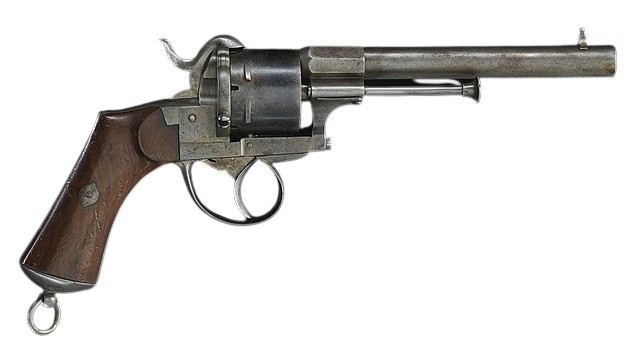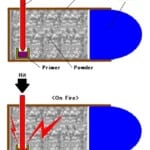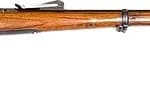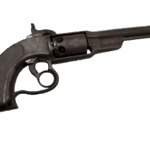
The Enduring Legacy of the .44 Caliber Lefaucheux Pistol: A Revolutionary 19th-Century Firearm
The .44 caliber Lefaucheux pistol stands as one of the most innovative revolvers in firearms history. Originating in mid-19th century France, this vintage revolver is renowned for its groundbreaking pinfire mechanism—a design that not only redefined ignition technology but also laid the foundation for modern cartridge-based firearms. Its robust construction, thoughtful ergonomics, and historical significance continue to captivate collectors, historians, and firearms enthusiasts alike.
Eugène Lefaucheux: The Visionary Behind the Revolution
Eugène Lefaucheux, born in 1802 in France, emerged as a master gunsmith whose inventive spirit transformed the landscape of firearm design. Beginning his career as a gunmaker’s clerk, Lefaucheux’s exceptional talent and technical ingenuity quickly propelled him into the forefront of arms innovation. In 1832, he established his own workshop, and by 1833 he had secured a patent for a breech-loading fowling piece—a precursor to his later, more revolutionary work.
Lefaucheux’s most significant contribution came with the development of the pinfire mechanism. Archival records from French patent offices and military documents confirm that his work bridged the gap between outdated flintlock systems and the emerging era of cartridge-based firearms. As noted by historian Jean-Pierre de la Motte, "Lefaucheux's innovations paved the way for modern revolver design by introducing concepts that remain fundamental to firearm engineering today."
The Revolutionary Pinfire Mechanism: A Technological Breakthrough
At the heart of the Lefaucheux pistol’s acclaim lies the pinfire mechanism—a radical departure from the flintlock and percussion systems that preceded it. This ingenious design integrated an externally exposed firing pin directly into the cartridge. When the hammer struck this pin, it ignited the primer and propelled the bullet from the barrel in a rapid, reliable sequence.
The pinfire system offered several distinct advantages. It enabled faster ignition, improved resistance to adverse weather conditions, and simplified the reloading process, making it particularly effective in the varied climates of battlefield environments. Historical sources, including in-depth reviews from Firearms Digest, emphasize that the pinfire mechanism "represented a quantum leap in firearms technology, providing speed and reliability that were previously unattainable."
Design and Operational Specifics of the .44 Caliber Lefaucheux Pistol
Engineered to combine robustness with user-friendly operation, the .44 caliber Lefaucheux pistol exhibits several advanced features for its era. Constructed as a six-shot revolver, it was available in both single-action and double-action variants. One of its standout characteristics was the side-loading gate, which allowed for the efficient insertion of pinfire cartridges—a feature that streamlined the reloading process considerably.
Many models of the Lefaucheux pistol also incorporated a folding trigger design, effectively eliminating the need for a traditional trigger guard and enhancing overall handling. With a standard barrel length of approximately six inches, the pistol struck an ideal balance between accuracy and ease of handling. Some models even featured an integrated ejector rod, further facilitating rapid reloading—a critical advantage on the battlefield. Detailed examinations of surviving examples in collections such as those at the Musée de l'Armée in Paris confirm these sophisticated design elements, underscoring the pistol’s advanced engineering.
Historical Impact and Civil War Service
Despite its distinctly European origins, the .44 caliber Lefaucheux pistol made a notable appearance on American soil during the Civil War. Although it was not adopted as the primary sidearm by either Union or Confederate forces, the pistol found favor among private purchasers, officers, and cavalrymen who valued its quick-loading capabilities and compact design.
Contemporary accounts and military records indicate that while the pinfire system allowed for faster operation compared to the prevalent cap-and-ball revolvers, it also presented certain limitations in terms of cartridge strength and consistent performance under rigorous combat conditions. One Civil War veteran noted, "The Lefaucheux was quick to load, yet in the thick of battle, its pinfire mechanism could be as unpredictable as it was innovative." This mixed reception ultimately confined its use to a niche role, yet it cemented the pistol’s place in the annals of military history as a precursor to later advancements.
Comparative Analysis with Contemporary Revolvers
When compared with other revolvers of the mid-19th century, the .44 caliber Lefaucheux pistol stands out for its distinctive blend of innovation and practicality. American designs, such as the Colt Dragoon revolver, were celebrated for their robust percussion systems and sheer stopping power. In contrast, the Lefaucheux pistol’s pinfire mechanism offered the advantage of rapid reloading and enhanced weather resistance—features that were particularly valuable in the diverse conditions encountered during military campaigns.
However, the pinfire system was not without its drawbacks. Its cartridges, though advanced for the time, often lacked the power and reliability of later centerfire designs. Historians and military analysts have noted that "the Lefaucheux pistol served as a transitional model, its limitations paving the way for the eventual adoption of centerfire technology, which combined greater reliability with enhanced ballistic performance." This comparative analysis highlights the dual legacy of the Lefaucheux pistol: a device that was both groundbreaking and inherently limited by the technological constraints of its era.
Legacy and Collectibility: The Enduring Appeal
Today, the .44 caliber Lefaucheux pistol is revered as a prized collectible and a tangible piece of firearms history. Its historical significance, coupled with its unique mechanical innovations, has ensured that it remains a sought-after artifact in auctions and museum exhibits around the world. Esteemed collector and historian Thomas Harrison remarked, "The Lefaucheux pistol is more than a weapon—it is a piece of living history that embodies the relentless innovation of 19th-century arms design."
Auction records and expert evaluations consistently underscore the pistol’s rarity and cultural value. Museums, such as those curated by the Musée de l'Armée, continue to display the Lefaucheux pistol as a masterpiece of engineering, while scholarly publications frequently cite its influence on subsequent revolver designs. Its presence in both private collections and public exhibits attests to its enduring appeal and the timeless fascination it holds for enthusiasts of vintage firearms.
Enhancements in Design and Modern Relevance
A closer examination of the Lefaucheux pistol reveals additional enhancements that underscore its forward-thinking design. Its innovative folding trigger, for instance, not only improved safety and handling but also allowed the firearm to be more easily concealed—an advantage in both military and civilian contexts. Moreover, the side-loading gate mechanism minimized mechanical wear over time, contributing to the pistol's longevity and reliable performance.
Technical schematics archived in the French arms repositories illustrate how these design choices were implemented with precision, ensuring that the pistol remained both functional and durable even after years of rigorous use. Modern re-interpretations of classic revolver models have drawn inspiration from these design features, proving that the legacy of the Lefaucheux pistol continues to influence contemporary firearm engineering.
The Transformative Impact on Firearms Evolution
The influence of the .44 caliber Lefaucheux pistol extends well beyond its immediate operational role. Its pioneering pinfire mechanism played a critical part in the evolutionary pathway that led to the development of centerfire cartridges—an advancement that revolutionized small arms design. By demonstrating that a more efficient, cartridge-based ignition system was feasible, Lefaucheux’s work provided a conceptual and practical foundation for subsequent innovations in firearm technology.
Scholarly studies on the evolution of armaments emphasize that the transition from flintlocks and percussion caps to modern cartridge-based systems can be traced directly to the breakthroughs achieved by innovators like Lefaucheux. As detailed in research on 19th-century firearms evolution, "the pinfire mechanism not only increased firing speed but also set the stage for a series of technological advancements that have defined modern ballistic performance."
Conclusion: A Testament to Innovation and Enduring Craftsmanship
The .44 caliber Lefaucheux pistol remains a symbol of innovation, exceptional craftsmanship, and the transformative power of technological ingenuity. Its revolutionary pinfire mechanism, coupled with a design that was as elegant as it was functional, marks it as a milestone in the evolution of firearms. From the visionary work of Eugène Lefaucheux to its significant, if specialized, role on the battlefields of the American Civil War, the pistol stands as a testament to an era defined by relentless innovation and bold experimentation.
For collectors, historians, and firearm enthusiasts, the Lefaucheux pistol is far more than an antique weapon—it is a piece of history that encapsulates the spirit of progress and the enduring quest for better, more reliable armaments. As modern technology continues to evolve, the legacy of the .44 caliber Lefaucheux pistol endures, inspiring current and future generations to explore the rich tapestry of innovation that has shaped the world of firearms.
Read more about pinfire here:
If you know of any forums or sites that should be referenced on this listing, please let us know here.







